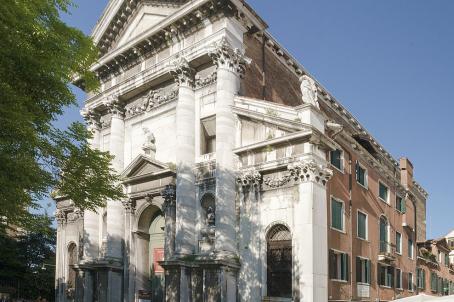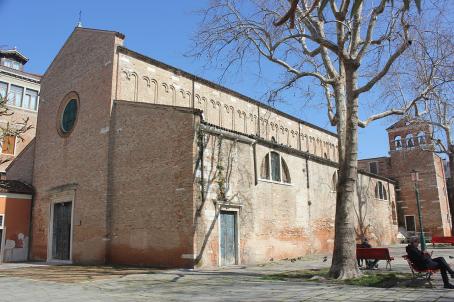Chiesa di San Vio
The church of San Vio was a 10th-century church. Closed in 1808, the church was demolished in 1813 and a small chapel was erected in its place on the old façade, now deconsecrated and used as a private house.
The church of San Vio was a 10th-century church. Closed in 1808, the church was demolished in 1813 and a small chapel was erected in its place on the old façade, now deconsecrated and used as a private house.

The Church of St George, built from 1926, is the Anglican church in Venice. The entrance consists of a simple bronze portal with a semicircular Istrian stone roof, surmounted by a statue of the saint and a bas-relief depicting St George slaying the dragon. The portal is flanked by two bronze side panels, also decorated in bas-relief. The bas-reliefs are dedicated to the memory of British soldiers who fell in Italy during the First World War and are the work of Napoleone Martinuzzi.

The church of San Vidal was founded in 1084 during the reign of Doge Vitale Falier (1084-1095/96). A new reconstruction of the church took place at the end of the 17th century with the intention of transforming the façade into a great monument to Francesco Morosini, doge from 1688 to 1694. The project was entrusted to Antonio Gaspari, who presented a series of designs freely inspired by the Roman church of Sant'Andrea al Quirinale. Finally, the heirs of Morosini abandoned the project and, following a change of patron, the new church was built by Andrea Tirali. The church is now closed to worship.

The church of Sant'Agnese was founded between the 10th and 11th centuries. In the following centuries, several architectural interventions took place, especially in the Gothic and Baroque periods. Jacopo de' Barbari's plan of 1500 also shows the presence of a Gothic portico in front of the façade, which has now disappeared. In 1810, the church was closed to worship as a result of Napoleonic decrees and much of the interior decoration was lost. The church was again used for worship in the mid-19th century after restoration work that left little of the original structure.